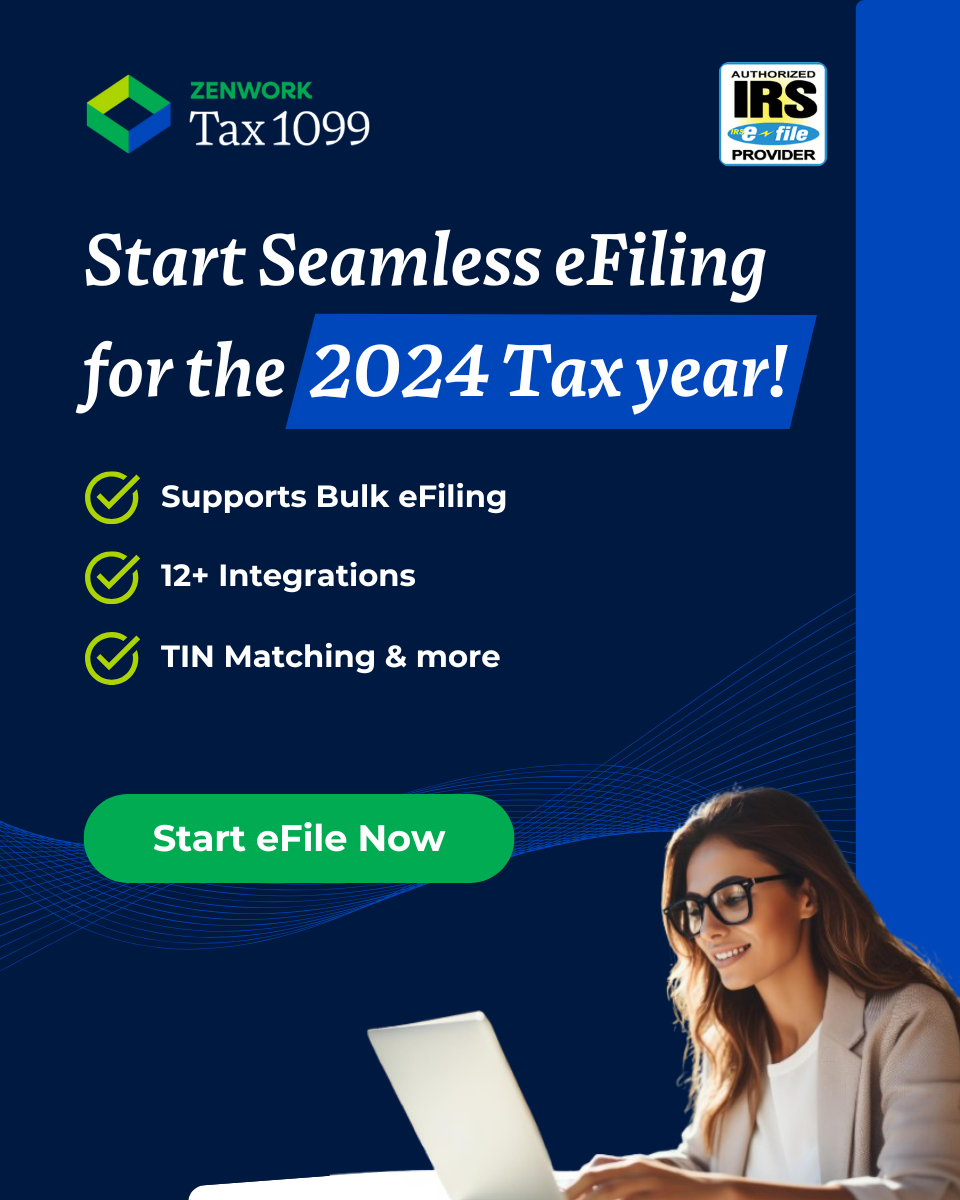Note: IRS delays the rollout of the $600 threshold for 1099-K reporting.
Learn More
The threshold for Form 1099-K remains at $20,000 with a 200 transaction limit for the year 2023. This delay designates 2023 as a transition period, maintaining the existing requirements for reporting.
Here’s a simple guide to understanding IRS Form 1099-K, Payment Card, and Third-party Network Transactions.
The rise in opportunities within the gig economy is indicative of the growth of the gig economy and its versatile work dynamics. Unlike traditional mainstream marketplaces, the gig economy helps businesses connect with the right talent, entities, contractors, and vendors who offer quality services at discounted prices on request.
While the gig economy ecosystem looks wonderful on the outside, it has some regulatory compliance issues plaguing its growth trends, ultimately slowing its performance.
One such regulatory challenge is tax compliance. Vendors, independent contractors, freelancers, and other small businesses, although provide quality services and honor their business promises, often fail to establish a concrete business compliance foundation, making them less reliable from the compliance perspective.
For example, some gig vendors do not disclose their EIN/TIN to their clients. Other contractors only accept payments in cash. The not-so-secretive tactic in play in this scenario is undisclosed income.
It’s true.
The gig economy, as big as it may seem, is plagued with corrupt tax practices, which allow independent contractors, vendors, freelancers, and other self-employed professionals to hide their income.
It is also interesting to see that about 36% of the U.S. workforce directly contributes to the gig economy. The pandemic and its inflationary consequences forced many professionals to pick up a “side hustle” to navigate through the unprecedented and unending saga that is the Covid-19 global pandemic.
However, noncompliance is not the norm in the gig economy. Businesses and self-employed individuals in the gig economy are striving to comply and maintain a good legal standing status with the state and federal authorities by adhering to the tax reporting practices.
One such tax information reporting practice is 1099-K reporting, which requires the payment settlement entities or PSEs to report the payments made to payees.
But what exactly does Form 1099-K have to do with the gig economy? And what are its implications on gig economy businesses and merchants?
The following will discuss in detail all such questions, and all there is to know about Form 1099-K, including the new updates to the form in the 2022-23 tax year, and some useful tips to eFile 1099-K form to prevent IRS penalties.
So, let’s get to it.
What Is Form 1099 K?
Form 1099-K is an IRS information return, which specifically deals with third-party network transactions and payment card transactions. These are payment transactions that must be reported on Form 1099-K.
Form 1099-K enables the payee (the freelancer or vendor) to record, document, and report all income received through such reportable payment transactions from the payment settlement entities in a calendar year.
You are required to report with Form 1099-K if you received payments:
- From payment card transactions
- In settlement of third-party payment network transactions
What Is A Payment Card Transaction?
According to the IRS, “Payment card transaction means any transaction in which a payment card, or any account number or other identifying data associated with a payment card is accepted as payment.”
What Is A Third-party Network Transaction?
According to the IRS, “Any transaction that is settled through a third-party payment network, but only after the total amount of such transactions exceeds the minimum reporting thresholds.” is known as a third-party network transaction
The IRS introduced a new update to 1099-K reporting, which splits the reporting requirements for filing Form 1099-K calendar years before 2022 and after 2021. Previously, there was no such categorization.
However, when U.S. President Joe Biden signed the American Rescue Plan Act of 2021 (ARPA) into law on March 11th, 2021, the Form 1099-K reporting regime was updated.
The new update seeks to stabilize the gig economy and help its businesses comply with the federal laws more effectively.
Currently, the IRS requires PSEs to report with Form 1099-K if they make gross payments exceeding $20,000 with a transaction volume of 200 or more in a calendar year. This condition explicitly applies to returns for calendar years prior to 2022.
If the returns are filed for calendar years after 2021, the gross payments threshold is lowered to $600 with no limit on the transaction threshold.
Who Needs To File Form 1099-K?
Third-party Payment Network entities and Payment Card entities that enable the reportable transactions are required to send Form 1099-K to their payees and the IRS.
Payees receive Form 1099-K which reports all payment transactions of the prior calendar year on or before the end of January of the current calendar year. The particulars of Form 1099-K are used by payees to review and confirm the payments received, record and document the forms for proof, and use the payment information to report income accurately.
What Is A Payment Settlement Entity?
- A payment settlement entity can be a domestic or a foreign organization.
- A payment settlement entity is an organization that is responsible for reporting the payment transactions made during a calendar year to the IRS.
- It is a central organization with a legal obligation to issue payments to its payees.
- In this context, merchant-acquiring entities are payment settlement entities for payment card transactions.
- Similarly, third-party settlement organizations are the payment settlement entities for third-party network transactions.
Use this guide from the IRS to further understand the key characteristics of payment settlement entities and other definitions.
When Is Form 1099-K Issued?
Form 1099-K is issued to the payees by the payment settlement entities when the PSE submits the instruction to transfer funds to the account of the participating payee to settle the reportable payment transaction.
A PSE must file Form 1099-K when all payments are made in the settlement of payment card transactions (credit/debit cards).
A PSE must file Form 1099-K if the payments are made in the settlement of third-party network transactions.
The IRS requires PSEs to report with Form 1099-K if the gross payments exceed $20,000 with a transaction threshold of 200 or more in a calendar year.
If the returns are filed for calendar years after 2021, the gross payments threshold is lowered to $600 with no limit on the transaction threshold.
1099-K Filing & Reporting Requirements
- Form 1099-K must be filed by payment settlement entities to the IRS. But prior to that, the PSEs must issue Form 1099-K to their participating payees to establish a consensus on the accuracy and relevance of the reports.
- When the gross payments exceed the $20,000 payment threshold along with a transaction volume of 200 or above, payment settlement entities are required to file Form 1099-K for the calendar year. This filing condition applies to all returns that are filed before the 2022 calendar year.
- When the gross payments exceed the $600 payment threshold with no set limit on transactions, the PSEs are required to file Form 1099-K for the calendar years. This filing condition applies to all returns that are filed after the 2021 calendar year.
- It is essential to note that the 1099-K reporting is only applicable to goods or services settled through a third-party payment network.
Verification Process
Verifying the identities of the payees is essential prior to process the payments and reporting the payments made in a calendar year.
- TIN Matching
The verification process begins with TIN matching or TIN Lookup, a process where the taxpayer identification number (TIN) is verified against the official TIN records of the IRS.
Use Tax1099’s real-time TIN Match system to verify millions of TINs instantly.
- Name Control
Name control is a verification process where the legal name or the ‘doing business as’ (DBA) name of the entity or the self-employed professional is validated against the IRS and social security administration (SSA) records to ensure that the TIN + legal name information of the payee matches the official records.
- Address Validation
While this is an optional practice, USPS address validation allows you to validate and verify the business addresses of your payees per the original USPS records. Address verification also enables you to retain the verified addresses for a variety of communication and documentation purposes.
When Is The Deadline To File Tax Form 1099K?
| Form | Description | Filing Type | Payee Due Date | IRS Due Date |
| 1099-K | Payment Card and Third-Party Network Transactions | Electronic Filing | January 31 | March 31 |
| 1099-K | Payment Card and Third-Party Network Transactions | Paper Filing | January 31 | February 28 |
What Are Deductions In 1099-K?
If you’re a small business, there are a variety of costs and fees that can be deducted from your business income as reported in the 1099-K form.
- When credit card companies charge “merchant processing fees” or “credit card processing fees”, these costs can be deducted from your income
- Costs relating to internet connection and access
- Web hosting fees
- Home office cost (specifically applies to small businesses that utilize their residential space for regular trade and business purposes)
Who Sends Form 1099 K To The IRS?
The payees in this scenario are the receiving end of the 1099-K forms. It’s the payment settlement entities (third-party payment processing networks and credit card companies) that need to file Form 1099-K with the IRS by the prescribed due dates to prevent penalties.
However, payees must review the 1099-K forms in order to confirm and deduct any business expenses from their income declarations. Further, the copies of Form 1099-K sent by the payer must be recorded and saved for documentation and reference purposes.
Utilize the unique 3-step e-Filing process enabled by Tax1099 to process your 1099-K e-file requests faster and better.


